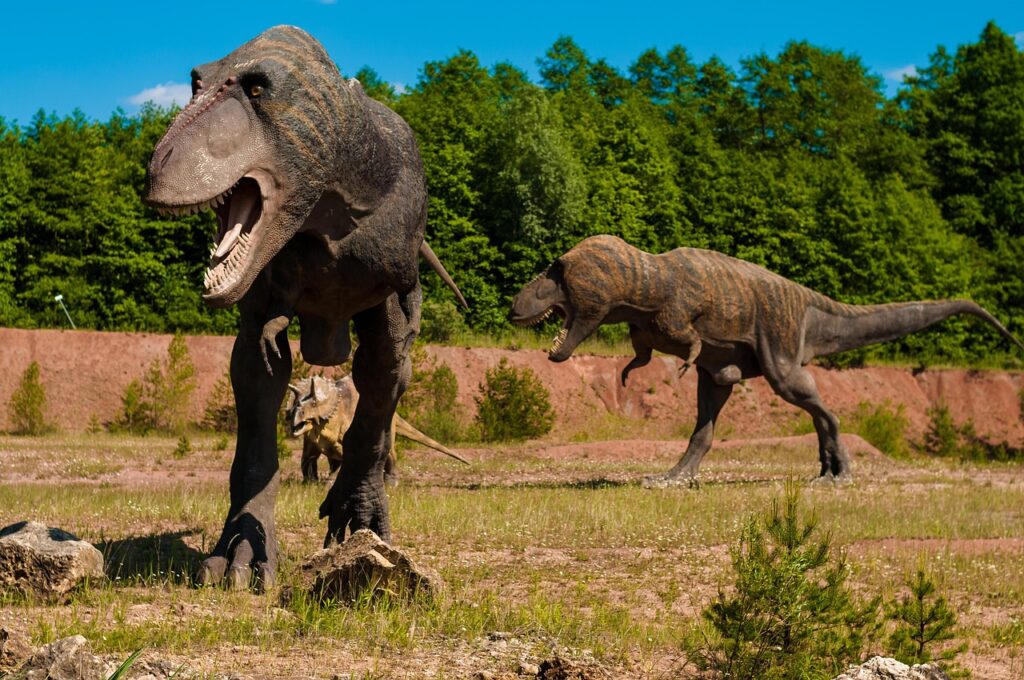Picture this: It’s 75 million years ago, and a pack of feathered predators moves silently through the dense forests of ancient Montana. Their sickle-shaped claws gleam in the dappled sunlight as they coordinate their attack on a massive herbivore. These aren’t the movie monsters you might imagine – they’re something far more sophisticated and terrifying. Welcome to the world of dromaeosaurids, better known as raptors, the Late Cretaceous period’s most successful and deadly hunters.
The Raptor Revolution: A New Kind of Predator
The Late Cretaceous period witnessed an evolutionary arms race that produced some of the most efficient killing machines the world has ever seen. Raptors represented a complete departure from the typical theropod hunting strategy of relying purely on size and brute force. Instead, they evolved a sophisticated combination of speed, intelligence, and precision that made them devastatingly effective predators.
These weren’t solitary hunters like many of their contemporaries. Raptors developed complex social behaviors that allowed them to take down prey many times their own size. The fossil record shows evidence of coordinated hunting strategies that wouldn’t look out of place in a modern wolf pack. This social evolution gave them a massive advantage over other predators of their time.
The Killing Claw: Nature’s Perfect Weapon
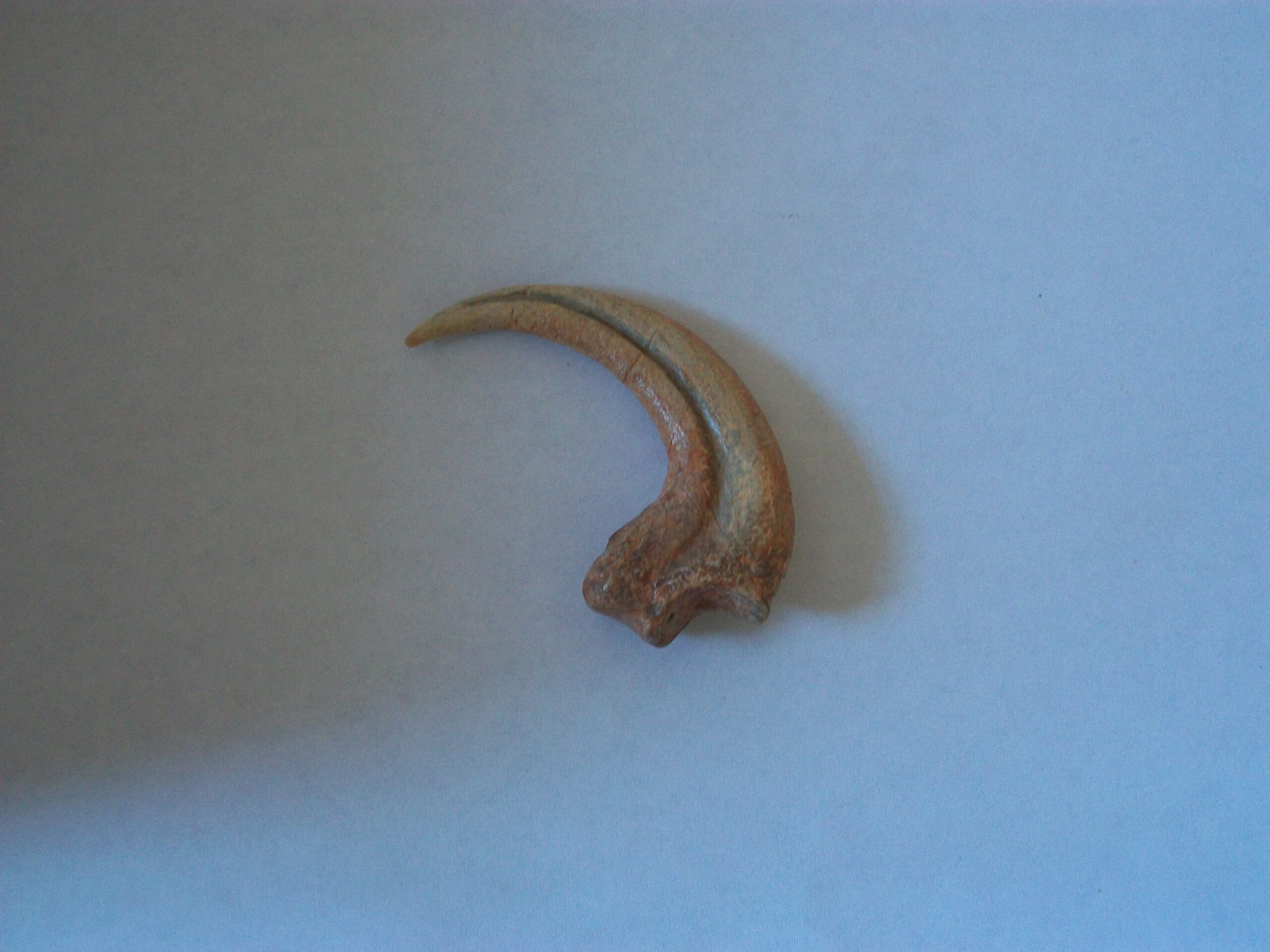
Every raptor species possessed what paleontologists call the “killing claw” – a massive, curved talon on the second toe of each foot. This wasn’t just any ordinary claw; it was a precision instrument designed for maximum damage. The claw could rotate through an impressive 180-degree arc, allowing raptors to maintain their grip on struggling prey while delivering fatal wounds.
Recent studies suggest these claws functioned like climbing spikes, enabling raptors to scale the sides of large dinosaurs while maintaining their balance. Imagine a Utahraptor using its killing claw to climb up a Triceratops like a deadly mountaineer, positioning itself for the perfect killing blow. The biomechanics of these claws reveal an engineering marvel that evolution spent millions of years perfecting.
Feathered Death: The Raptor’s Hidden Advantage

One of the most shocking discoveries in paleontology came when scientists realized that raptors were covered in feathers. These weren’t the flight feathers of modern birds, but rather display plumage and insulation that served multiple purposes. The feathers provided camouflage, helping these predators blend into their environment during stalking behavior.
More importantly, the feathers likely played a crucial role in thermoregulation, allowing raptors to maintain optimal body temperature for extended hunting sessions. This gave them incredible endurance compared to their cold-blooded competitors. A feathered raptor could hunt actively throughout temperature changes that would slow down other predators, extending their effective hunting window significantly.
Pack Mentality: The Power of Coordinated Hunting
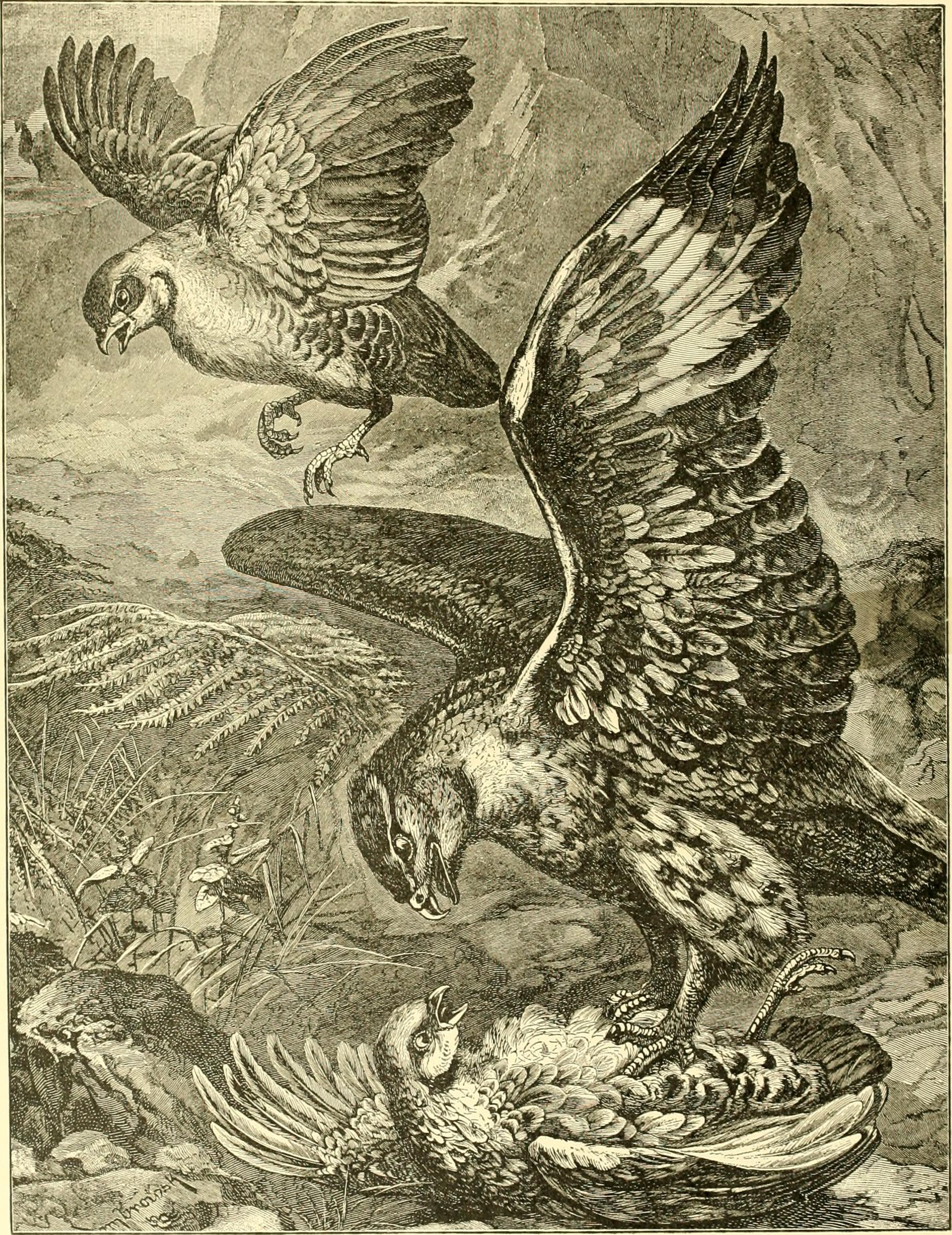
Evidence from multiple fossil sites suggests that many raptor species hunted in coordinated groups, displaying intelligence levels that rival modern pack hunters. The famous Deinonychus discoveries in Montana revealed multiple individuals associated with a single large herbivore, indicating sophisticated group hunting behavior. These weren’t random encounters – they were planned attacks.
The pack hunting strategy allowed relatively small raptors to take down massive prey that would have been impossible for a single individual to kill. Like modern lions targeting a buffalo, raptor packs could surround their prey, with some individuals distracting while others moved in for the killing blow. This collaborative approach made them incredibly versatile predators.
Speed Demons: Built for the Chase
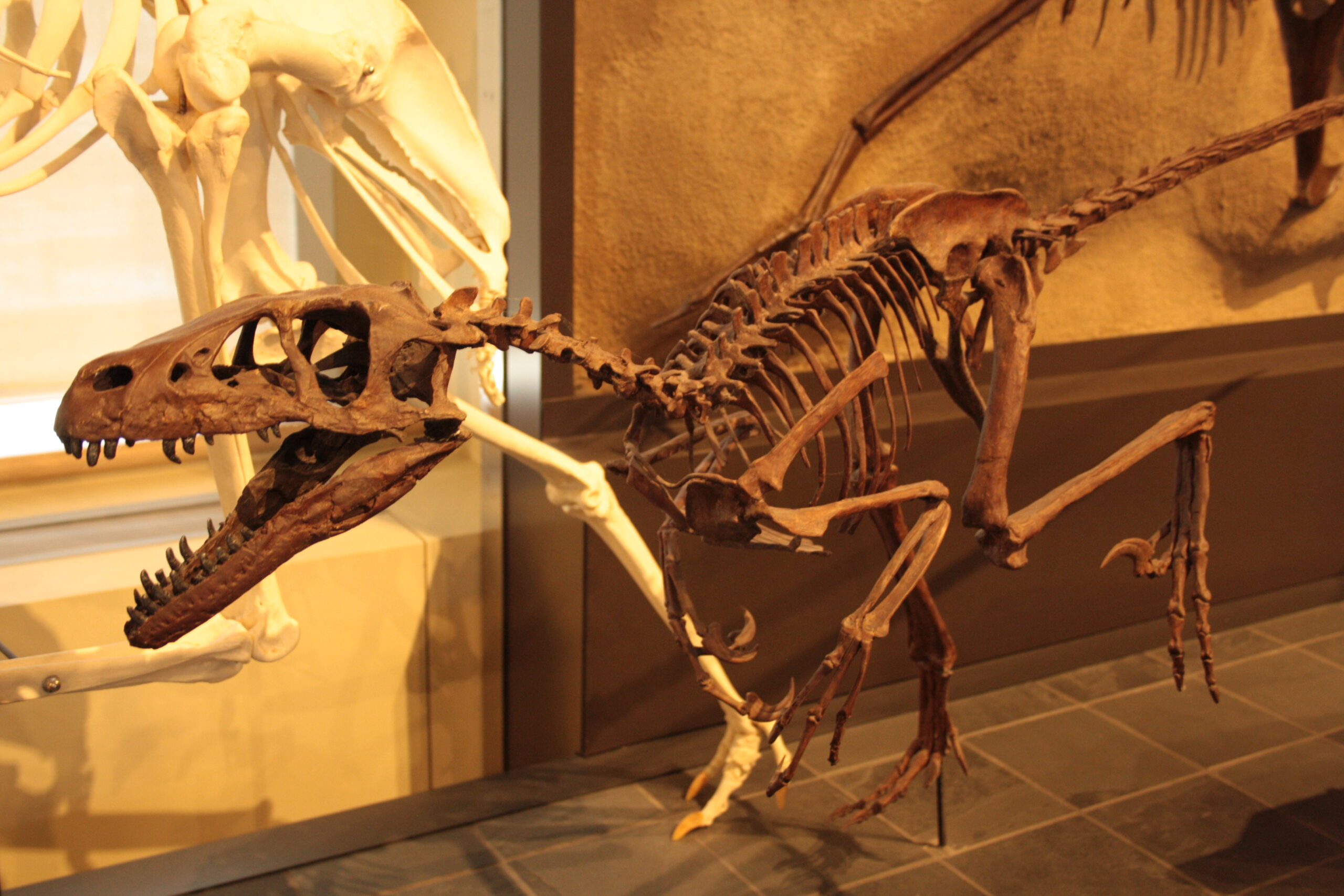
Raptor anatomy reveals creatures built for explosive speed and agility. Their long, powerful legs were perfectly proportioned for rapid acceleration and sharp turns. Biomechanical studies suggest that smaller raptors like Velociraptor could reach speeds of up to 40 miles per hour in short bursts, making them faster than most of their prey.
The long tail, stiffened by bony rods, acted like a dynamic balancing pole during high-speed pursuits. This tail allowed raptors to make impossibly sharp turns while maintaining their balance, giving them a crucial advantage in dense forest environments. No prey animal could outmaneuver a raptor in close quarters combat.
Brain Power: Intelligence Behind the Brutality
Raptors possessed some of the largest brains relative to body size of any dinosaur group. Their enlarged cerebellums indicate sophisticated motor control and spatial awareness, while their well-developed optic lobes suggest excellent vision. This combination of intelligence and sensory acuity made them formidable problem-solvers in hunting situations.
The brain structure also supports evidence for complex social behaviors and communication. Raptors likely used a combination of vocalizations, body language, and possibly even color displays to coordinate their attacks. This level of cognitive sophistication separated them from the more primitive predators of their time.
Sensory Superiority: Hunting with Precision
The raptor sensory system was a masterpiece of evolutionary engineering. Their forward-facing eyes provided excellent depth perception, crucial for judging distances during high-speed attacks. The large eye sockets found in fossil skulls suggest these predators had exceptional vision, possibly even approaching the acuity of modern birds of prey.
Beyond vision, raptors possessed highly developed hearing capabilities. The structure of their inner ear indicates they could detect low-frequency sounds that would have been inaudible to their prey. This gave them the ability to track injured or distressed animals across considerable distances, making escape nearly impossible once they locked onto a target.
Versatile Hunters: Adapting to Any Environment
One of the most remarkable aspects of raptor success was their adaptability to different environments and prey types. Fossil evidence shows raptors thriving in forests, plains, and even coastal environments. Each species developed specialized hunting techniques suited to their particular habitat and available prey.
Smaller raptors like Microraptor were perfectly adapted for arboreal hunting, using their four wings to glide between trees while pursuing smaller prey. Larger species like Utahraptor dominated open environments, where their size and power could be used to maximum effect against massive herbivores. This adaptability made them virtually unstoppable across diverse ecosystems.
The Climbing Advantage: Vertical Hunting Strategies
Recent research has revealed that raptors were exceptional climbers, using their killing claws and strong forelimbs to scale vertical surfaces. This ability opened up entirely new hunting strategies that other predators couldn’t exploit. They could climb trees to access arboreal prey or scale the sides of large dinosaurs during attacks.
The climbing ability also provided excellent escape routes when faced with larger predators. A raptor could quickly scale a tree or cliff face, reaching safety that ground-bound competitors couldn’t access. This three-dimensional mobility gave them a significant survival advantage in the competitive Late Cretaceous ecosystem.
Grasping Hands: Tools of Destruction
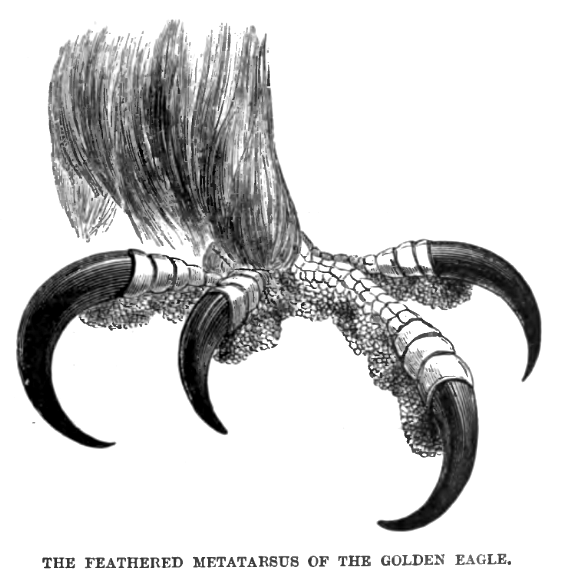
Raptor forelimbs were incredibly powerful and flexible, with large, curved claws that could grasp and manipulate prey with surprising dexterity. Unlike the tiny arms of tyrannosaurs, raptor arms were fully functional weapons that played a crucial role in their hunting success. The strong shoulder muscles and flexible wrists allowed for complex grasping behaviors.
These grasping hands could pin down struggling prey while the killing claws delivered the fatal blow. The combination of arm strength and claw sharpness created a restraint system that few prey animals could escape once caught. Think of it as nature’s version of a bear trap, but one that could think and coordinate with other traps.
Size Diversity: The Right Tool for Every Job
The raptor family included an incredible range of sizes, from crow-sized Microraptor to the massive Utahraptor, which could weigh over 1,500 pounds. This size diversity allowed different species to exploit different ecological niches without competing directly with each other. Each size class had its own optimal prey range and hunting strategy.
The smaller raptors specialized in quick, agile prey like early birds and small mammals, while the giants could take down armored dinosaurs that other predators couldn’t handle. This size specialization made the raptor family incredibly successful across the entire Late Cretaceous period, with species thriving in virtually every environment.
Communication Networks: Coordinated Killing
Evidence suggests that raptors possessed sophisticated communication systems that allowed for complex coordination during hunts. Fossil trackways show evidence of coordinated movement patterns, while brain structure indicates the neural capacity for complex social behaviors. They likely used a combination of vocalizations, visual displays, and possibly even chemical signals.
This communication network allowed raptor packs to execute hunting strategies that required precise timing and coordination. Different pack members could take on specialized roles during a hunt, with some acting as drivers, others as blockers, and still others as finishers. This level of tactical sophistication was unprecedented among dinosaur predators.
Evolutionary Pressure: Driven to Perfect Killing
The Late Cretaceous period was marked by an evolutionary arms race between predators and prey. As herbivorous dinosaurs developed better armor, larger size, and more effective defensive strategies, raptors responded by evolving increasingly sophisticated hunting techniques. This constant pressure drove the evolution of their remarkable killing abilities.
The competition wasn’t just with prey species – raptors also had to compete with other predators for territory and resources. This dual pressure created an environment where only the most efficient and adaptable hunters could survive. The result was a group of predators that represented the pinnacle of theropod evolution.
The Legacy of Terror: Impact on Ancient Ecosystems
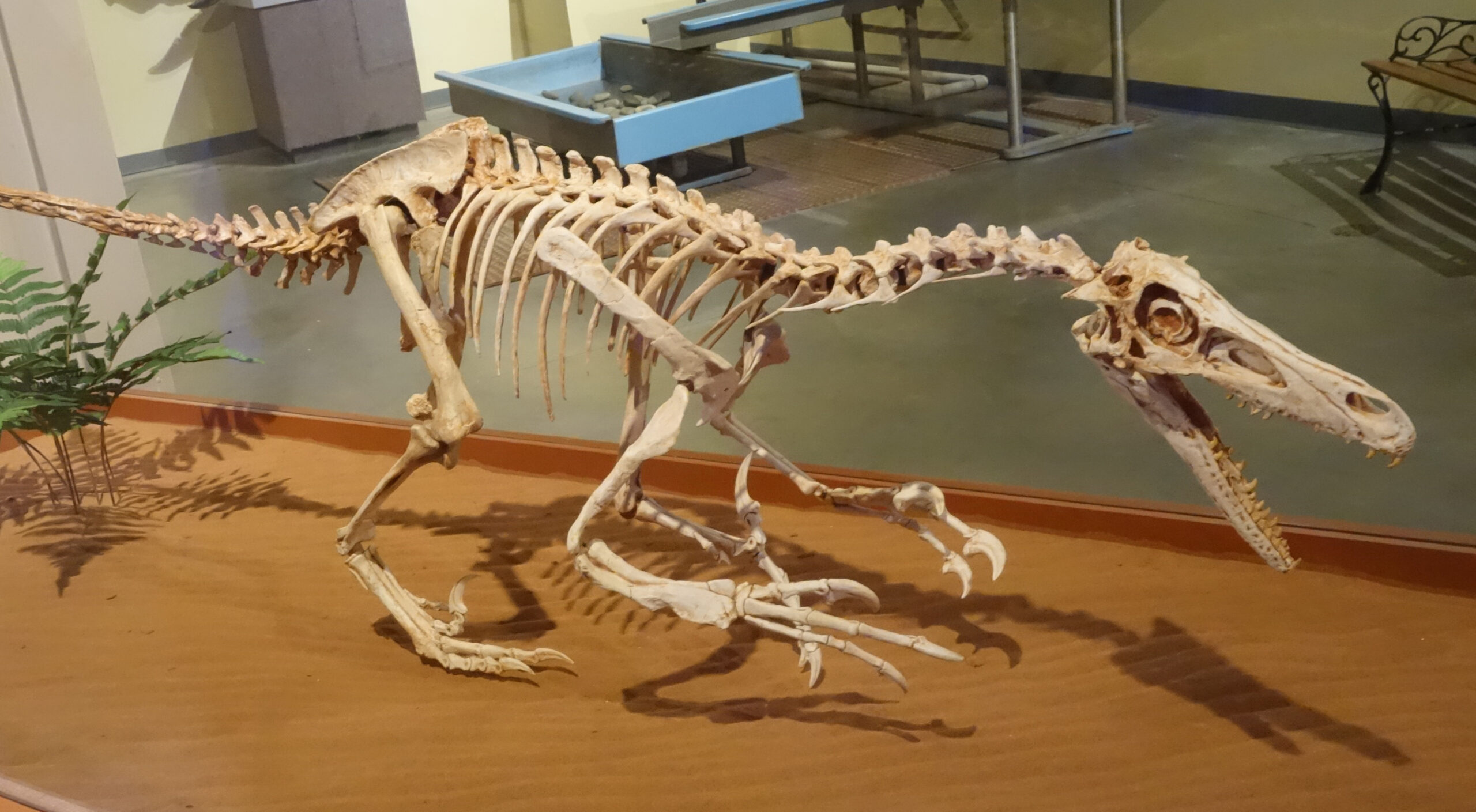
Raptors fundamentally changed the dynamics of Late Cretaceous ecosystems. Their presence forced prey species to develop new defensive strategies, leading to the evolution of increasingly elaborate armor and defensive behaviors. The constant predation pressure shaped the evolution of entire dinosaur communities.
The ecological impact extended beyond direct predation. Raptors likely played a crucial role in controlling population sizes of herbivorous dinosaurs, preventing overgrazing and maintaining ecosystem balance. Their efficiency as hunters made them keystone species in their environments, with effects that rippled through the entire food web.
Conclusion: Masters of Ancient Warfare
The success of raptors in the Late Cretaceous period wasn’t due to any single adaptation, but rather to the perfect combination of physical capabilities, intelligence, and social behavior. They represented a new paradigm in predator evolution – one that prioritized efficiency, coordination, and adaptability over simple brute force.
These remarkable creatures dominated their ecosystems for over 30 million years, leaving a legacy that continues to influence our understanding of predator-prey relationships and evolutionary biology. Their sophisticated hunting strategies and social behaviors set them apart as some of the most successful predators in Earth’s history.
The next time you see a modern bird of prey in action, remember that you’re watching the descendants of these ancient killers. The precision, intelligence, and deadly efficiency that made raptors so successful still flows through their evolutionary lineage today. What other secrets might these feathered terrors still be hiding in the fossil record?



